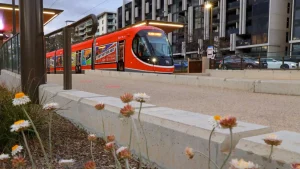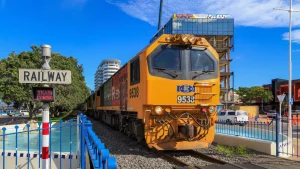Most UK rail routes represented
What is the appropriate collective noun for a gathering of UK train operating companies, industry representatives, and rail technology specialists? Should it be a locomotion, a platforming, or perhaps a control room?
Train operators traditionally perceived one another as competitors but increasingly UK rail operating companies are working as partners and looking for ways to share technology, innovation, and best practice.
There is a new openness to discussing operational performance as one railway, which made the recent roundtable facilitated by TTG Europe a momentous and positive occasion for the UK rail industry.
Executives representing the operators of more than 70 per cent of the UK’s train lines and routes participated, as did the industry’s peak body, Rail Forum, and the technology provider Resonate.
TTG Europe hosted the roundtable to explore how train operating companies are currently using Driving Advice Systems (DAS) across their fleets, and how they expect to evolve these uses in the future.
The invited guests were asked to assess how the benefits of DAS, including fuel cost savings and improved train performance, are being reported at an executive level. The end-user relationship between drivers and the technology was also a point of interest.
Shared priorities and collaboration
The roundtable enabled attendees to engage with the operational and sustainability outcomes that they all had in common. These priorities included train performance, fuel cost reduction, and decarbonisation, which are all supported by the DAS solution.
It didn’t take long for conversations in the room to grow from these considerations to include more aspirational goals, according to Trapeze Rail and TTG Managing Director, Chris Gates.
“Beyond the shared priorities that are a feature of the UK rail industry, our roundtable revealed an enthusiasm for looking at the bigger picture to advance the industry through collaboration and finding ways to operate as a single railway,” he said.
There was agreement that delivering rail reform requires cooperation to improve performance across the national network. This desire to work more harmoniously hinged on the concept of connectivity and considered the needs of both the passenger and freight sectors.
“It isn’t easy to manage the competing needs of freight and passenger units, especially during peak load periods on the UK’s congested network,” Chris said. “However, the group recognised that freight needs to flow through junctions as efficiently as passenger services can.”
Freight currently has a secondary status on the network when compared to passenger services. This creates a fuel efficiency problem as freight trains are required to burn fuel as they wait for gaps on the line to appear.
Identifying a better way to manage the efficient movement of passenger services to create gaps would assist the passage of freight and benefit the UK rail network as a collective.
There was significant interest in the TTG Connected Driving Advice System (C-DAS) which enables trains to communicate with one another in real time via an external network such as the Traffic Management System.
By constantly understanding their movements, these connected trains are aligned and can function together. This creates a far more sophisticated ability to move large amounts of passenger and freight traffic through a network’s most complex locations.
The Golden Report
One of the TTG team’s most important contributions to the roundtable was introducing the DAS Golden Report for the first time.
“The gathered executives recognised that hard numbers matter when justifying calls for new funding, new driver education, and the other support required to fast-track the industry,” Chris said. “The Golden Report fills this gap.
“It delivers value to all operators by placing a monetary figure on the improvements in train performance, energy consumption, and fuel costs that the industry is achieving with DAS.
“Changing the old, established ways of operating is crucial, and the Golden Report plays a vital role in signposting this for the industry.
“A very revealing comment I heard was that the group needed to act as one and share Golden Report information among themselves to realise the full benefits, rather than maintaining a competitive mindset.”
The Golden Report was welcomed as a revelation in aggregating the insights of DAS to express the benefits at a higher level. This goes beyond the DAS user, namely individual drivers, to allow operators to consider all drivers and all routes.
This data-led approach lets operators consider how a route is performing and interrogate how this differs on one route from another. Is it driver performance, which can be addressed through training? Or is it the route’s characteristics such as high cornering, or multiple junctions?
While discussing data from the Golden Report, it became clear that optimal driving compliance is higher in newer drivers who have been trained recently and are learning to use DAS from the start of their careers.
This led to shared ideas on how to incentivise drivers who may be wary of the technology. It was emphasised that DAS helps to make the driver’s job less stressful as they avoid station overruns and unnecessary queuing or waiting at junctions.
With the UK committed to achieving a 78 per cent reduction in CO2 emissions by 2035, the group also considered the contribution DAS and C-DAS makes to decarbonisation.
The Golden Report specifies the volume of CO2 emissions that have been avoided during the reporting period, so passenger and freight operators can point to their own fuel savings in the first instance and highlight their broader contribution to UK decarbonisation.
Positivity and cooperation
The spirit of positivity and cooperation that made the DAS roundtable such a success was summed up by Resonate’s Keith Thomas when he said, “It is a triumph that the industry has developed an end-to-end intervention for every train.”
Resonate is a technology company specialising in rail and connected transport solutions including signalling control, operations management, and logistics. Keith also updated the attendees about the introduction of Luminate’s TMS product on additional routes and described how Luminate dovetails with the TTG C-DAS solution.
The Engagement Manager at Rail Forum, Robert Hodgson, described the roundtable as an interesting and positive discussion from all those involved.
“It was great to catch up with the team from TTG Europe, and also representatives from the major train operating companies, to discuss the latest developments in C-DAS and how the introduction on fleets would benefit the rail industry in so many ways, including lower carbon emissions and improved train performance.”
Chris Gates said the TTG Europe team is already looking forward to hosting the next rail industry roundtable in the months ahead.
“Having taken the lead by facilitating a very positive group discussion with a large proportion of the UK’s passenger services, the next step will be to ensure that the voice of freight rail operators is heard at our next round table.
“Our team was challenged to contribute global insights to the discussion, and I’m delighted that we could achieve that, particularly on how C-DAS can deliver better outcomes for freight rather than exclusively for passenger services,” he said.
“I also welcome the group’s positive response to the DAS Golden Report. By highlighting the relevant data and presenting it as monetary value, change-makers can use the report to formulate a more convincing, data-led position when proposing new solutions within the industry.”
Want to understand the TTG DAS and C-DAS solutions in more detail? Our experts are available now to help you learn more so get in touch today.



